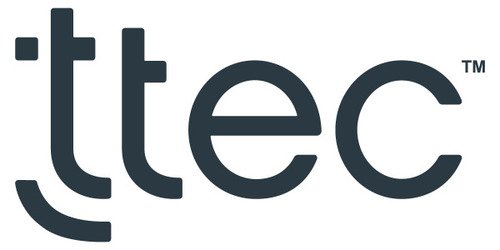How a digital-first strategy is redefining contact centres – Iain Banks Group Vice President, TTEC EMEA
Understanding where your customers are and how to reach them in a seamless fashion is the cornerstone of any modern customer experience. Unfortunately, by the time a customer typically reaches your contact centre it means you have failed to deliver an effortless experience.
So, imagine if you could get a clear view of your current customer experience across all channels and touchpoints for each customer journey, and have a digital-first strategy that differentiates your CX from competitors through its effortless and proactive design.
In today’s world, it is crucial that your end-to-end customer journey is seamless and can be orchestrated, automated, and proactive across all communications channels. Here are three elements that can drive personalised effortless experience and pre-emptively meet customer needs:
1. Rethink contact centres as ‘customer engagement’ centres
Traditionally, contact centres have focused on how to optimise customer interactions only once a person has contacted an agent. However, innovative CX companies have begun to reap the benefits of orchestrating the entire CX journey to better understand their customers.

Again, contact centre agents are very often on the receiving end of a customer experience that’s gone awry, as they encounter someone in a customer journey who has reached a point where they can’t solve it on their own.
That is why we need to think in broader terms of how to manage that end-to-end customer journey and what impacts it can have on the customer. This means contact centres can then focus on the following in their evolved role as customer engagement centres:
– Monitor all customer interactions
– Ingest and integrate CX data
– Transform operations into a real-time command centre
– Orchestrate and deliver customer journeys pre-emptively and proactively (vs responsively)
– Tune and improve interactions over time through analytics and proactive orchestration algorithms
And just as customers can come into your business from multiple channels— digital to voice, voice to chat, brick and mortar to mobile—remember that these steps too can cross over each other at different moments in time. This exacerbates all the outcomes that could potentially occur. By understanding the flexible nature of today’s customer, you can start to influence and drive better experiences.
It is from here that you can gain the ability to pre-emptively predict customer needs and proactively deliver the right information over the right channel quickly.
This presents a huge opportunity to reduce contact centre volume while also reducing the customer’s effort that’s required to solve their issue.
2. Make CX effortless through digital messaging
Digital channels have evolved to become a myriad of communications such as text, messaging, video, and apps blended today in a digital ecosystem.
It is all asynchronous, all in one place. Customers now expect you to meet them on their terms, on their own time. That’s why enabling customers to communicate with agents this way has made the digital messaging channel a much richer and candidly more convenient channel than traditional voice or webchat.
With digital messaging organisations can handle hundreds of thousands to millions of contacts in a day. It’s quick to turn on and quick to scale (typically weeks for an initial deployment, not months).
We’re finding that this evolution of digital messaging has made it much more feasible to meet the customer where they are in 2020 and the new-normal and assist them within that native channel, as opposed to forcing them out of a channel and into IVR.
The cloud space is really driving this agility. As the quarantine began, we found that many companies were plagued by long hold times, customers were frustrated and centres needed to offload volume.
What we found is with digital messaging in the cloud, centres can handle an incredibly larger volume of contacts per day. It’s quick to turn on, and quick to scale.
And this isn’t just valuable for customers, it’s incredibly valuable for employees, as well. Most contact centre agents are still working from home and these channels are more conducive to a work from home environment for employees who may not, always have a perfectly quiet environment, especially with home schooling. For many, digital messaging is a way to keep a conversation going alongside the challenges of today.
3. AI is a CX game-changer
Now you are orchestrating the customer journey and connecting customers to relevant digital channels, but often there are times where customers have questions that do not demand an agent, or they want an immediate response. The best way to leverage this need for self-service and effortless experiences is to let AI come into play.
AI leverages both strategies we discussed above. It enables you to not only meet the customer in digital channels, but immediately deliver assistance instead of asking the customer to wait in time consuming queues. Intelligent automation can help identify customers in the moment of need and serve them directly on time by leveraging analytics and knowledge management.
It’s also important to note that AI isn’t just chatbots. When an agent does need to jump on a call, AI can act as an intelligent virtual assistant to employees that enables them to provide relevant and insightful information. The real power of intelligent automation is its ability to guide customers and agents across their entire journey to enable effortless experience.
AI needs to be embedded across the entire customer experience—it’s part of the journey orchestration, it’s part of omnichannel, and it empowers all these factors to deliver immediate and effective results.

TTEC Holdings, Inc. (NASDAQ: TTEC) is a leading digital global customer experience technology and services company focused on the design, implementation and delivery of transformative solutions for many of the world’s most iconic and disruptive brands.
The Company delivers outcome-based customer engagement solutions through TTEC Digital, its digital consultancy that designs and builds human centric, tech-enabled, insight-driven customer experience solutions for clients and TTEC Engage, its delivery center of excellence, that operates customer acquisition, care, fraud prevention and detection, and content moderation services.

For additional information on TTEC View their Company Profile





